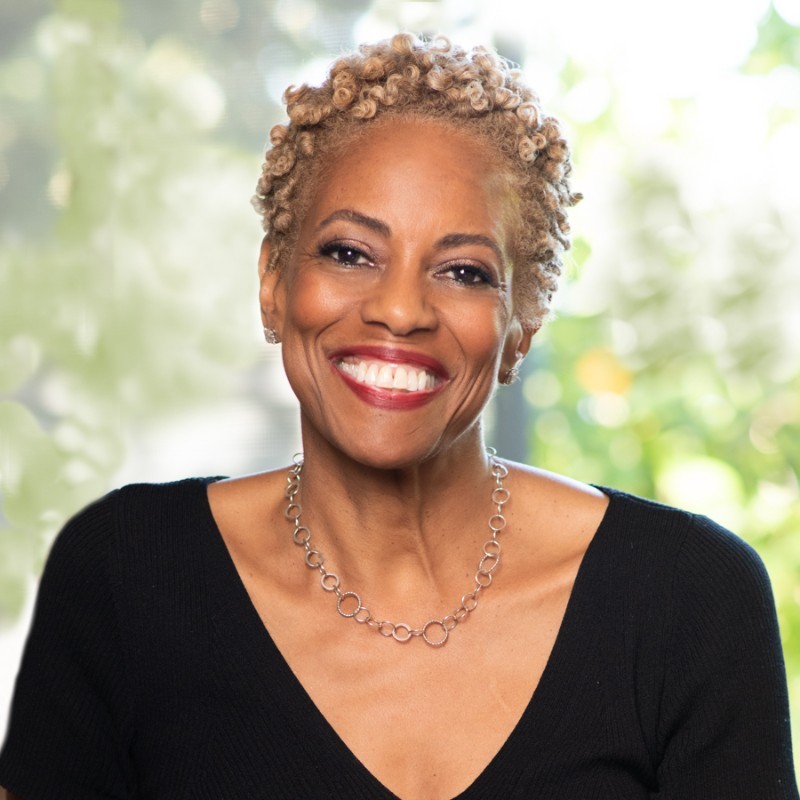How to Confront Bias and Thrive Across Our Differences
In my 20 plus years of doing diversity and inclusion work and a lifetime as a Black woman, I have never seen anything like what has happened in the U.S. and the world in the last few months. So many have let go of the denial and embraced the indisputable truth that to be neutral about racial inequity and injustice is to be complicit with the status quo; and the status quo is racism.
I have heard people explain that because awful moments of the Civil Rights Movement were televised, it moved the hearts and minds of the country. Similarly, it seems like as a society we have finally had enough of these recorded atrocities of police brutality. While excessive force and policing against black people has been happening for a long, long time, the resurgence of the Black Lives Matter movement has engaged more people of all races and backgrounds to answer the call of ending systemic racism. I believe this movement can bring about real change because people are starting to realize that our fates are interconnected, that no one can truly be free until all of us are free.
So many people standing up against racism means that police departments are co-creating with the communities they serve to implement new ways to ensure public safety for all. The former Washington Redskins team has changed its name finally recognizing the pain it caused so many of us, especially the indigenous people of this country. Confederate flags and statues are coming down and our true history is rising up.
I must admit, these changes make me hopeful.
I have hope that for the first time a majority of Americans are ready to examine how racism has shaped, even warped our views of what is beautiful, safe, normal, and good—and the impact that has had on policing, educational and job opportunities, health care, income inequality, housing, and beyond. We will only bring about true equity, fairness and justice if we all continue to examine and confront not only our personal biases, but where they are supported by institutional power and dominance.
I'm excited to appear on the upcoming LinkedIn Live show on antiracism and allyship. I hope you'll join me for this live discussion on Monday, August 17th at 9AM PDT/12pm EDT where we will discuss this moment in the racial justice movement and how you can be an ally in your professional life.
The next step in your journey in allyship starts with you. Taking action and enacting change starts on a very personal level with examining your unconscious biases. We all have them, no matter who we are, and it likely impacts in important ways how you interact with people in the workplace.
In my course Confronting Bias: Thriving Across Our Differences, I talk about four ways you can start to break down your unconscious biases and become consciously inclusive.
Learn more in my course “Confronting Bias: Thriving Across Our Differences.”
1. Understand your own cultural lens (Yes — you have one!)
We all have a culture. We've all been taught about what's important, what’s beautiful, how to act, how to think, what's valuable… and even who’s valuable. All of that creates a cultural lens that impacts how we see the world and how we interpret every single dynamic and relationship.
You may think you already “see it all,” but you don’t. What you see is your own peculiar version of the world.
For example, if someone is sitting at a meeting and not interjecting, you may think that the “quiet” employee doesn’t have a thought in their head or is lacking confidence. But that person’s communication style and idea of exuding confidence are shaped by their cultural norms (just as yours are) and they may demonstrate it in a very different way than you do.
To create a more inclusive workplace, you need to account for your own cultural lens: How has it been shaped? By whom?
You also need to be empathetic. Consider what it is like to be someone who's from a different culture and has a different set of values in this particular environment.
And remember to follow the “platinum rule.” The “golden rule” says to treat people the way you want to be treated. The “platinum rule” says to treat people the way they want to be treated. This requires paying attention, being much more curious, asking questions and thinking about not only your own lens, but the cultural lens of others.
2. Examine and counter unconscious bias
If we want to create more inclusive environments, we need to get out of our self-denial about the fact that our brain is reaching conclusions without telling us. Our fast brain, which we rely on much more frequently than we know, is sorting information and people very quickly and coming to conclusions based on themes, patterns, and schema.
Even though I am a “diversity lady," I’ve had to go through the same learning as everyone else. Once I started to recognize my brain is always trying to find the easiest solution and the most efficient way of understanding things, I had to become humble. I had to be okay with realizing that I had unconscious bias too.
One of the most important things we can do to counter our biases is to be conscious and intentional. Get out of denial. Go look for your bias. Get humble. When you see it in yourself, slow down and ask: What assumptions and judgments am I making about this person? Based on what? How am I making this decision? What meaning am I making of this data? Am I only selecting for the data that confirms what I already think I know? What am I missing? Should I ask someone else what they notice?
And when you see bias in others, be willing to stand up and say something. If you’re driving with your uncle Joe and he says “that must be a [blank] driving,” interrupt the bias by asking a question: Why do you think that? What do you mean by that? You may also say something like “I have a very different experience with that group of people.”
3. Get out of your comfort zone
You're always going to be uncomfortable before you're comfortable around difference. Because here's the thing: if you insist on being comfortable throughout all of these interactions and dynamics, you are forever in the dark about what you don't know.
If you have a very narrow set of people that you’re working with, living with, hanging out with, chances are you won’t notice your biases for and against groups. You need exposure to a large enough group to learn that many of your biases, presumptions, and conclusions are absolutely not correct.
Expand your comfort zone. Make yourself a minority by going to spaces where you are the different one with regard to some salient aspect of your identity. Challenge yourself to see the heterogeneity in a group that you thought was very homogeneous. Be willing to learn the right language so you don’t commit micro-inequities based on presumptions or ignorance.
When you’re feeling awkward and kind of weird, remember that the more you put yourself out there and feel awkward, the more you’re in a place to learn and empathize with people who are often made to feel uncomfortable. And when you’re in a place to learn, you’re also in a place to be inclusive.
4. When you make a mistake, stay engaged
If you’re going to be an inclusive person and make connections across differences, you have to be okay with making mistakes. This is not about perfection. This is about connection.
When you make a mistake (and you will—we all will), I encourage you to stay engaged, learn from the mistake, and grow. Here’s how.
If you say the wrong thing, apologize. Be curious about the impact of your behavior, not only your intent. And if someone is kind enough to share with you the impact your behavior had on them, see it as a gift—an opportunity to change something. Instead of saying “that’s not what I meant, you got it wrong…”, be willing to say “Oh shoot. I’m sorry I got it wrong.” Then correct that behavior.
Move closer. Often when people make mistakes, it challenges their sense of self so much that they withdraw rather than confront their mistakes and the harm it may have caused. But that adds insult to injury. Instead, engage more so the other person knows your intent was positive.
Start learning. With everything available to read and watch, there’s no excuse not to learn. You can also turn to someone who is like you but who may have more experience with a situation or a group of people. Ask them: “What’s the right way to say this?” Or maybe you had a particular situation happen and you stepped in to confront the bias, but you want to do better next time. Ask them what they suggest you do.
This is an inflection point. People of all backgrounds are realizing that it is in their best interest to live in a world where no one is demeaned because of their skin color or other aspects of their identity. We're refusing, by and large, as a society, to knowingly or unknowingly allow racist behavior to happen and to negatively impact our shared humanity.
So whether you are a leader, manager, or this is your first job, know that you have the ability to part of the change that we are witnessing and it starts with recognizing your own unconscious bias.
Keep learning and growing with Free Courses to Help You Become a Stronger Ally and Have Inclusive Conversations through the rest of the year.
Topics: Career success tips
Related articles




